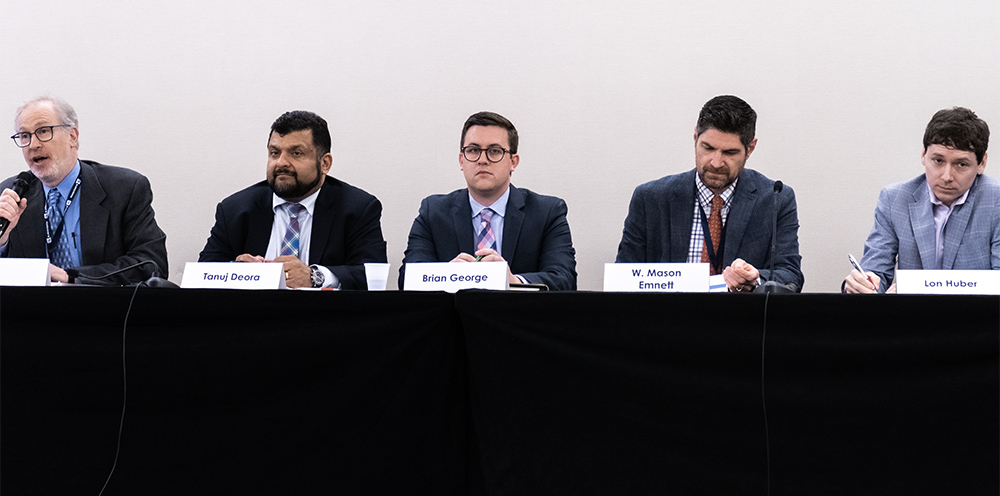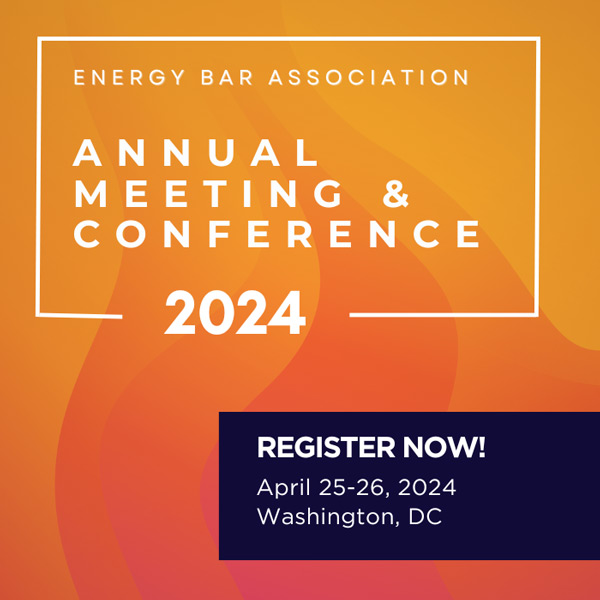
WASHINGTON — Much of the focus at the Energy Bar Association’s Annual Meeting last week was on the grid’s transition from fossil fuels — specifically matching carbon-free electricity to demand curves.
“For many of you, it may feel like the goalposts are moving, complicating business risks,” NorthBridge Group Partner Neil Fisher said. “And what was considered the gold standard five years ago may not be acceptable in the near future.”
While retiring renewable energy credits from wind farms far from the customer was seen as good enough in the past, now many large, sophisticated customers want to match their load with 24/7 clean energy.
The federal government — the largest buyer of electricity in the country, at about 54 TWh per year —historically only tried to comply with the Energy Policy Act of 2005, which required 7.5% of that come from renewables, said White House Council on Environmental Quality Director of Clean Energy Tanuj Deora.
But President Biden has upped that with a goal of getting the federal government to 100% carbon-free electricity by 2030.
“We know it’s very ambitious, right?” Deora said. “So, we are looking actively to figure out how we get there because not only is it ambitious, but it is absolutely necessary. I think we all know that we’re living the consequences of climate change, and the impact on the environment here real time, and so there’s no time to waste.”
Today the grid is already at 40% carbon-free power so the federal government procurements will take that into account.
Deora said the government would not seek to supply its facilities exclusively with the output from existing zero-emissions facilities. Instead, the procurements will focus on new resources. And the government is hedging its bets because it is still unclear exactly which technologies will prove economical and scalable among advanced nuclear, virtual power plants, carbon capture and storage, clean hydrogen and others.
The federal government is not alone in trying to procure more green power. Voluntary commitments from corporate buyers helped to build about 40% of new clean energy resources in recent years, Deora said.
Google (NASDAQ:GOOGL) has aggressive clean energy goals and a total load of 18 TWh annually that is growing because of computing power demands from new technologies like artificial intelligence, the firm’s Brian George said. Google says it has met its entire demand with renewable energy since 2017.
“Even as we do that, there are periods during the day where we still rely on fossil energy to serve our data center demand,” George said. “In 2021, around the world … our data centers consumed about 66% of carbon-free energy on an hourly basis.”
Like the federal government, Google wants to increase that to 100% by 2030, which will require it getting new resources built where they can directly serve its data centers. Focusing on 100% carbon-free electricity can help send the signals that are needed to build out the new technologies required to reach an emissions-free grid, he added.

“Our systems are not set up to recognize and reward customers for what they are already doing just from paying their electric bills, much less … be tailored to the actions that the Googles of the world want to be taking to be driving change,” said Constellation Energy (NASDAQ:CEG) Senior Vice President of Public Policy Mason Emnett. “And so, we’re spending a lot of time working with our customers in terms of the product development, the commercialization of these types of products.”
While wind and solar are the cheapest options now, over time the more they get built the less the power produced matches up with demand every hour. Emnett said once they hit about 50% of demand that split starts to grow. Once you get to 100% annual match with renewables, the grid is still relying on balancing resources for about 25% of its total needs, he added.
Interregional Transmission
Another EBA panel focused on getting more interregional transmission lines built.
The experiences of Texas and its neighboring grids in SPP and MISO during the 2021 winter storm are one of the main reasons former FERC Chair Richard Glick wants to see interregional transmission built. ERCOT lacked major connections with the outside, and it was short on power for days, leading to hundreds of deaths, while the nearby sections of the Eastern Interconnection were able to import power from farther afield and avoided the worst.
“There is a lot of consensus out there that much more is needed in terms of connections between these regions,” Glick said.
Many in Texas might still be skeptical about linking up with the rest of the grid. But in other regions, even state regulators have indicated that they support addressing the barriers to interregional transmission.
“We do know, with regard to interregional transmission in particular, that there are multiple benefits,” Glick said. “And part of the problem — some are very easy to quantify, like probably production cost reductions — … but some of the benefits, whether it be resilience, whether it be achieving public policy goals … are more difficult to quantify.”
Figuring out a way to quantify those benefits is going to be necessary to make progress and deal with the very tricky issue of cost allocation, he added.
“Whenever we talk about transmission, it always does come down to cost allocation,” Glick said. “There’s a lot of other issues. There’s always barriers, but cost allocation is the big one.”
While interregional transmission can produce benefits, the conversation around expanding it has not been very refined, said Edison Electric Institute Managing Director Kevin Huyler.
“When I look at some of the proposals that are out there for driving interregional transmission investment, I don’t see a lot of nuance, which sometimes isn’t surprising, particularly if it’s a legislative proposal,” Huyler said.
Some have suggested that regions should be able to get a 30% minimum transfer requirement, but Huyler said nobody really knows what the right number is, and getting accurate figures is vital to proper transmission planning.
“It can’t be entirely precise,” he added. “But I think there has to be an effort made … to have customers and stakeholders [understand] why that much is being built.”
Invenergy is pursuing merchant interregional projects around the country, along with the development of new renewable resources and that makes it come at the issue with a sense of urgency, said its Executive Vice President of Public Affairs Kelly Speakes-Backman.
“I don’t want to turn this into a whole climate discussion, but it’s real and it’s here, and we’ve got not a lot of time to fix this,” Speakes-Backman said. “Frankly, the planning and the work that goes into it takes a really long time. And this is part of why we’re in the transmission business itself — to help with the urgency.”
Invenergy can make it easier to get transmission by investing its capital to get new lines constructed. But it does need to get paid for the benefits of such investments to make it work economically, she added.

